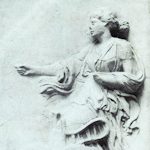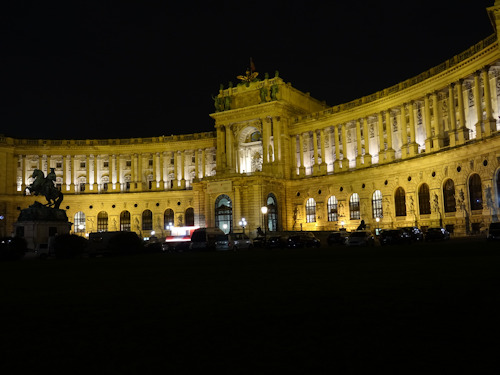
When the artists and artisans of the ancient Greek and Roman metropolis of Ephesos put their tools away, little did they know that the fruits of their labour would one day sit in an Imperial palace in Vienna…
- Small collection of classical statues, reliefs, etc. from a major archaeological site
- In the Neue Burg palace wing along with the House of Austrian History
- Good way to see the best bits inside the Neue Burg, too
- See also:
- Greek and Roman antiquities at the Kunsthistorisches Museum
- Roman Vienna
The Ephesos collection

(Photo of the ruins at Ephesos c. 1867 – c. 1898. Courtesy of the Rijksmuseum)
Since the late 19th century, Austrian archaeologists have been excavating and researching the Ephesos site in modern-day Turkey.
Ephesos (or Ephesus, depending on whether you’re Greek or Roman) was a thriving city in classical times and the location of one of the seven wonders of the world: the Temple of Artemis.
Had you lived there around 500BC, you might have bumped into Heraclitus, the cryptic philosopher credited in the western world with the idea of impermanence. This was the man who said something along the lines of “Nobody ever steps in the same river twice.”
The Ephesos Museum displays some of the results of the archaeologists’ efforts, gifted to Austria by Sultan Abdul Hamid II of the Ottoman Empire at the turn of the 19th and 20th centuries.
Essentially, you have a variety of statues, reliefs, architectural elements, and other bits and pieces from the excavation work.
Without a deeper understanding of Greek and Roman art and culture, it’s hard for the layperson to appreciate the individual items for themselves, even though they come with detailed descriptions.
What does come across, for example, is the monumental nature of the original site: a settlement housing tens of thousands of people with numerous civic buildings.
The worn antiquities, often incomplete, seem to hint almost at a lost alien civilisation.
Equally, you gain an understanding of the huge effort and meticulous research work that has obviously gone into unearthing (literally and figuratively) the history and treasures of the site.
Collection highlights
It would take a greater mind than mine to understand what constitutes a particular highlight, but the series of reliefs from the Parther Monument certainly contribute to that sense of wonder and scale.
These reliefs come from a large and long frieze most likely celebrating the Roman–Parthian war of 161–166 and its victor, Emperor Lucius Verus.
The Scraper of Ephesos is a wonderful 1st-century bronze statue of an athlete removing the sweat from his body with a strigil.
Researchers reconstructed the statue from broken pieces, as they did with another highlight: a 2nd-century statue of a baby squeezing a goose.
All these works raise various questions about their origin, materials, creators, purpose, and more, but one question in particular stands out – why did anyone think it was a good idea to make a statue of a baby with a goose?
The location

(The Neue Burg and home to the Ephesos Museum. At night, um, obviously)
The Ephesos collection resides within the Neue Burg wing of the Hofburg palace complex.
This wing should have housed royal apartments, but wasn’t ready until after WWI. By this time, Austria had become a republic; any royals were distinctly ex-royals and ineligible for state-sponsored luxury accommodation.
So the Neue Burg lent itself to other uses, like providing a home to museums.
The location is quite exquisite.
The antiquities sit in curved halls and giant staircases at the front of the building. Huge marble columns and white ceilings match the displays quite perfectly, as if built as a showcase for some Emperor’s collection of souvenirs from the super-rich equivalent of a Greek beach holiday.
Tickets & visitor tips
Unless you have an annual pass for the family of locations belonging to the Kunsthistorisches Museum group, you need a ticket to the House of Austrian History to access the Ephesos Museum. The two institutions share the same part of the Neue Burg building.
A few tips:
- Even if you’re not into antiquities, you might want to get a ticket just to see inside the Neue Burg
- Note that almost all information is provided in English and German, and an audioguide is available. The entrance area has coin-operated lockers
- You only need a few minutes to browse the Ephesos collection, unless you want to examine objects or information displays in detail
- The main building of the Kunsthistorisches Museum also has a Roman and Greek section. (I’m particularly fond of how they designed the galleries with the gorgeous lighting. Look out for the Gemma Augustea, in particular: a large engraved cameo made of onyx set in gold.)
- For items of a more mundane nature, visit the Roman Museum. This small institution offers a concise and informative overview of Roman Vienna (known as Vindobona) with excavated officer housing in the basement
How to get to the Ephesos Museum
See the History Museum article for tips on how to reach the Ephesos Museum, since they share an entrance.
Address: Heldenplatz, 1010 Vienna | Website